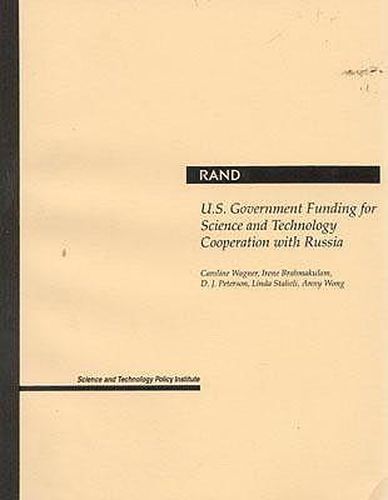This document details U.S. government spending on cooperative science and technology activities with Russia. The U.S. government spent, on average, 300 million dollars a year during the 1990s to support science and technology (S&T) cooperation with Russia. This document details U.S. government spending on cooperative S&T activities with Russian partners. RAND collected and analyzed data at the project level and surveyed agency officials about specific projects and programs. These data were aggregated by spending into categories created by RAND. The report thus provides an analytic, cross-agency overview, presenting a broad picture of the U.S.-Russia S&T relationship between 1994 and 2000. The U.S. government’s projects with Russia have a slightly different pattern than can be observed with other scientifically advanced countries: They are more binational in character, less collaborative, more technology-based, less of a shared effort, and dominated more by spending in aerospace applications. Reports from scientists working with Russian counterparts indicate that the United States is gaining significant scientific benefit from this joint collaboration. Although funding for the U.S.- Russia S&T relationship seems to have dropped in 2001, there has been a revived interest within the U.S. scientific community in working with Russia and an increase in the number of projects being considered.
Read More





